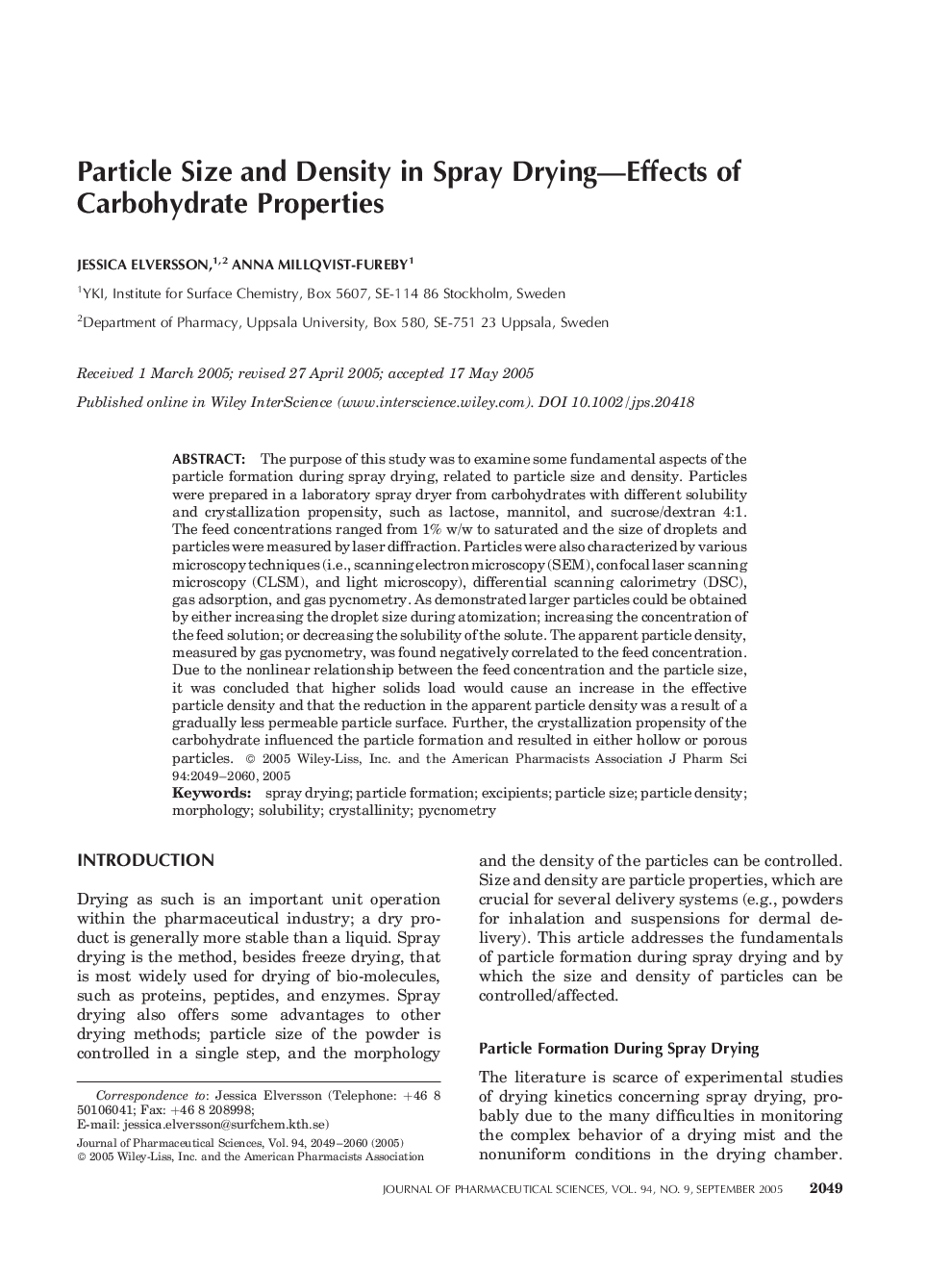| Article ID | Journal | Published Year | Pages | File Type |
|---|---|---|---|---|
| 2487300 | Journal of Pharmaceutical Sciences | 2005 | 12 Pages |
Abstract
The purpose of this study was to examine some fundamental aspects of the particle formation during spray drying, related to particle size and density. Particles were prepared in a laboratory spray dryer from carbohydrates with different solubility and crystallization propensity, such as lactose, mannitol, and sucrose/dextran 4:1. The feed concentrations ranged from 1% w/w to saturated and the size of droplets and particles were measured by laser diffraction. Particles were also characterized by various microscopy techniques (i.e., scanning electron microscopy (SEM), confocal laser scanning microscopy (CLSM), and light microscopy), differential scanning calorimetry (DSC), gas adsorption, and gas pycnometry. As demonstrated larger particles could be obtained by either increasing the droplet size during atomization; increasing the concentration of the feed solution; or decreasing the solubility of the solute. The apparent particle density, measured by gas pycnometry, was found negatively correlated to the feed concentration. Due to the nonlinear relationship between the feed concentration and the particle size, it was concluded that higher solids load would cause an increase in the effective particle density and that the reduction in the apparent particle density was a result of a gradually less permeable particle surface. Further, the crystallization propensity of the carbohydrate influenced the particle formation and resulted in either hollow or porous particles. © 2005 Wiley-Liss, Inc. and the American Pharmacists Association.
Keywords
Related Topics
Health Sciences
Pharmacology, Toxicology and Pharmaceutical Science
Drug Discovery
Authors
Jessica Elversson, Anna Millqvist-Fureby,
